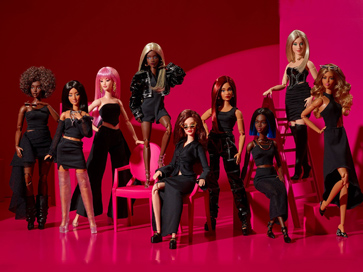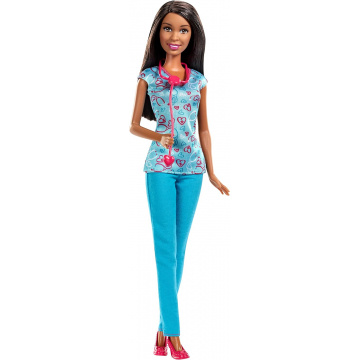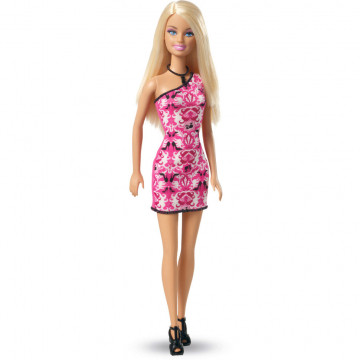The History of Barbie

Barbie is a doll that has been a fashion and popular culture icon for over 60 years. Created by Ruth Handler in 1959, Barbie has evolved since her first release to become the most popular doll in the world.
Barbie's history begins in 1956, when Ruth Handler, co-founder of the toy company Mattel, traveled to Europe with her family. There, she saw her daughter Barbara playing with a doll named Lili, who was an adult figure with a rubber body and removable clothing. Handler was inspired by this doll and decided to create her own version for American girls.
Thus, Barbie was born, and she was introduced Barbie was first introduced at the New York Toy Show in 1959. The doll had a plastic body and removable clothing, and was sold alongside a variety of accessories, including shoes, hats, and handbags. At first, Barbie was only available in three skin colors: white, black, and Asian.
Despite some critics arguing that Barbie promoted an unrealistic beauty ideal for girls, the doll quickly became a commercial success. In its first year of production, over 350,000 units were sold. As Barbie's popularity grew, Mattel began to release new versions of the doll, including models with different professions and from different decades.
In the 1960s, Barbie became a symbol of fashion and popular culture. The doll was sold wearing clothes inspired by the latest haute couture designs, and versions of Barbie depicting famous people, such as Marilyn Monroe and Jackie Kennedy, were released. In the 1970s, Barbie also became into a feminist icon, with the introduction of versions of the doll that had traditionally male professions, such as astronaut and doctor.

In the 1980s and 1990s, Barbie continued to evolve to reflect changes in popular culture. New versions of the doll were released inspired by popular movies and television shows, such as "Star Wars" and "Clueless." Versions of Barbie with different body types and ethnic features were also created to make her more inclusive.
Today, Barbie remains one of the most popular dolls in the world. Despite facing criticism and controversy throughout her history, she remains a symbol of fashion and popular culture. In recent years, Mattel has worked to make Barbie more inclusive and representative of the diverse bodies and ethnicities of the girls who play with her.
In 2016, Mattel launched "Barbie Fashionistas," a line of dolls with different body types, including curvy, plus-size, and petite. Versions of Barbie with different skin tones and ethnic features, such as afro hair and slanted eyes, have also been released. These initiatives have been well received by parents and educators seeking more representative dolls for girls.
In addition to her doll line, Barbie has expanded her presence into other areas of popular culture. She has appeared in films, television shows, and video games, and has inspired a wide variety of licensed products, including clothing, shoes, and accessories. She has also been the subject of exhibitions and museums dedicated to her history and cultural impact.
Barbie's history is a reflection of how popular culture and beauty ideals have evolved over the past few decades. Despite criticism and controversy, Barbie remains one of the world's most popular dolls and an icon of fashion and popular culture.
- visits: 40792
- 09-09-2021
- Vintage and News
Last entries
Barbie among the superheroes
Barbie isn't just a doll; she's a cultural phenomenon that's constantly reinventing itself. Barbie has evolved, and now, more than ever, she's positioned herself as an icon of power and versatility. Let's...
Read moreBarbie Basics 2025
The Barbie Basics collection returns in 2025 with a sophisticated reinterpretation of the classic Little Black Dress (LBD), maintaining its iconic status in the world of miniature fashion. Since its first...
Read moreKit You Create Barbie Basics
Get ready to take your passion for Barbie to the next level! Mattel has launched the innovative You Create Barbie Basics Kit, a collection that will allow you to customize your dolls like never before....
Read more




 See on Amazon
See on Amazon
